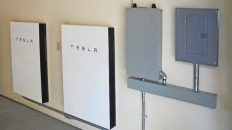How to Know How Many SOLAR PANELS are Needed ?
According to all indicators, the energy of the future is solar. Home and industry are rapidly adapting to it. Many casinos/hotels on the Strip have already installed massive arrays to capture and convert energy. In July of 2021, MGM announced that its massive 100-megawatt array supplies 90% of the energy needed for its 13 resort properties.
Can you say, “solar-powered slot machines”? Solar is even being adapted and integrated to power automobiles. Batteries force you to stop, plugin, just so you can recharge. Solar-powered vehicles can keep rolling while charging. A terrific advantage.
LET’S TAKE A CLOSER LOOK AT SOLAR FOR HOME USE
Adding solar to your home will reduce utility bills, make you more self-sufficient, lower your carbon footprint, and make a favorable impression on many of your neighbors.
When you start thinking about adding solar, the prospect can seem overwhelming. Everyone starts the process with the same two basic questions:
- Where would I install it?
- What will it cost?
And that last question leads to the next and most interesting one:
JUST HOW MANY SOLAR PANELS DO I NEED?
Of course, that depends upon just what you want your solar system to accomplish.
- Do you want the system to support 100% of your needs?
- Do you want to overbuild it for upcoming expansion? (Are you going to add a swimming pool, for example?)
- What are the personal consumption habits of your family?
- The amount of uninterrupted sunlight does your geographical and physical location receive?
THERE ARE SOME GENERAL RULES OF THUMB
The typical solar panel is about five and a half feet by three feet. So be thinking about how you would arrange those on your roof or in an open area on the ground.
A 2,000 square foot home in Las Vegas is going to use around 10,000-12,000 kilowatt-hours of power a year. So, you’re going to need a solar system capable of delivering 5 to 10 kilowatts which is going to require around 20 panels.
And you have to ask yourself if you’re going to cover 100% of your electrical use or a lesser percentage of it.
IS THERE A WAY TO CALCULATE HOW MANY SOLAR PANELS I NEED?
To estimate the number of panels you might need let’s, take a look at some of the dry math involved. After all, numbers don’t lie.
Let’s construct a formula based on three things: how much energy you’re going to use in a year, how many watts you’re going to need to meet your estimated needs, and how efficiently the panels produce power.
WHAT IS YOUR LOCATION’S HISTORICAL POWER USAGE?
Look back over the history of your location’s electrical usage for a few years. Nevada power maintains pretty accurate records even if you recently moved into the unit, and you can request them or go online at https://www.nvenergy.com/ to learn more.
In order to be as accurate as possible, you need to consider how many appliances you have and what you may add in the future to accommodate your lifestyle. Make room if you plan to increase the number of electrical devices in your home or add a pool, workshop, or exterior lighting, for example. Don’t overthink and panic about this because, frankly, as time progresses devices become even more efficient at using electricity. Look at what’s happened with refrigerators, televisions, and AC units over the years.
Now, for our example and to keep math simple we’ll say you use 10,000 kilowatt-hours of electricity in a year.
HOW EFFICIENT ARE THE SOLAR PANELS BEING USED?
Solar panels are rated based on how much power they put out under specific and ideal conditions. There’s a pretty wide range have efficiency for them based on who manufactured them and the quality of materials involved in construction. 200 to 400 watts of power is a pretty safe assumption, so for example let’s use 300 watts of power generated over 8 sunny hours a day.
One 300 watt panel receiving sun exposure for eight hours a day will yield roughly yield 2.5 kilowatt-hours per day. Times 365 days a year gives us a yearly total of about 900 kilowatts in a year from that one panel. So, minimally, you’re going to need 12 panels to produce 10,000 kilowatt-hours over the course of a year.
Now let’s be honest. A lot of these calculations depend on where you are located on the surface of the planet. I can’t think of one city dad gets 365 days of uninterrupted sunshine. Yuma, Arizona, and Las Vegas, Nevada, might get close; but not perfect for our needs. For example, Las Vegas has 310 sunny days per year — meaning 55 of them are going to be gloomy.
BUT WAIT THERE’S A WIGGLE!
Now there’s a third element in calculating how many panels you’re going to need. As the earth tilts on its axis toward the sun over the seasons it alters the efficiency of solar panels. panels have a thing called production ratio. In other words how much energy does the solar panel array produce over a year? It’s mathematical skullduggery in which your array never delivers a one-to-one result. In simple English, this means your array will not be as efficient as you might calculate. Production ratios usually range between 1.2 to 1.4.
LET’S DO A SAMPLE CALCULATION:
The annual wattage goal is 10,000 kilowatt hours
Each panel’s daily wattage is 2.5
Multiply 2.5 times the number of sunny days in a year (2.5 X 310 = 775 watts). This is the amount of power one panel will make for you in a year. 775 watts.
We need 10,000 yearly watts so divide that number by 775 = 12.9 or 13 panels.
Now to accommodate the power ratio of the array multiply the number of panels by the estimated power ratio of 1.3. So, 13 X 1.3 = yields a need for 17 panels.
LET’S MAKE THIS SIMPLE. HERE’S THE FORMULA:
The number of panels times 2.5 watts times the number of sunny days multiplied by 1.3 ratios = Total Annual Wattage of the solar array.
13 panels X 2.5 watts X 310 sunny days X 1.3 power ratio = 13,098 total annual watts.
THERE’S AN EASIER WAY!
Wait a minute! If your mind is as blown as mine, make this easy! Contact or call Sol-Up, Nevada’s premier residential and solar installer. Sol-Up makes solar easy! They use the best converting, most efficient panels in the industry. Their industry-leading Panasonic panels have a 25-year warranty. Sol-Up will accurately calculate your needs and give you the best pricing available. Reach them today at https://www.solup.com/ or call 702.605-6154. Sol-Up is revolutionizing solar one roof at a time! – source: solup
Thanks for visiting Ghbestpromo.com to read “How to Know How Many SOLAR PANELS are Needed?”







